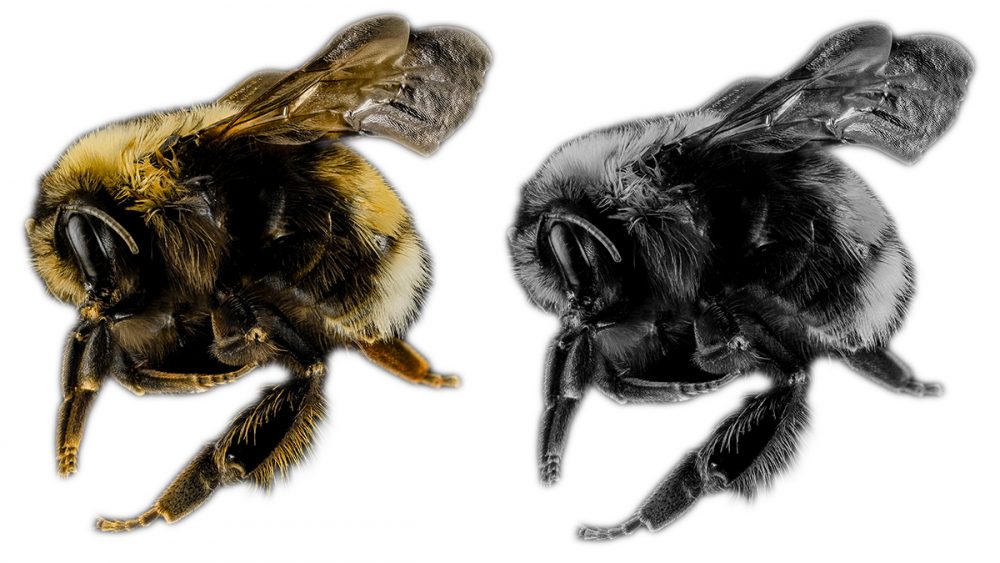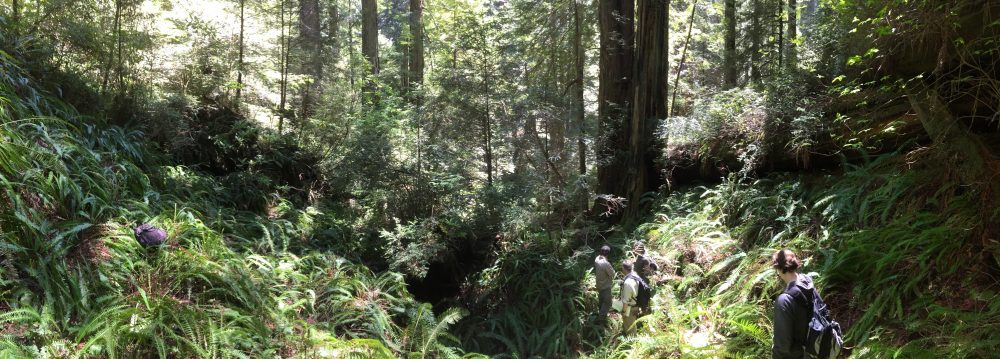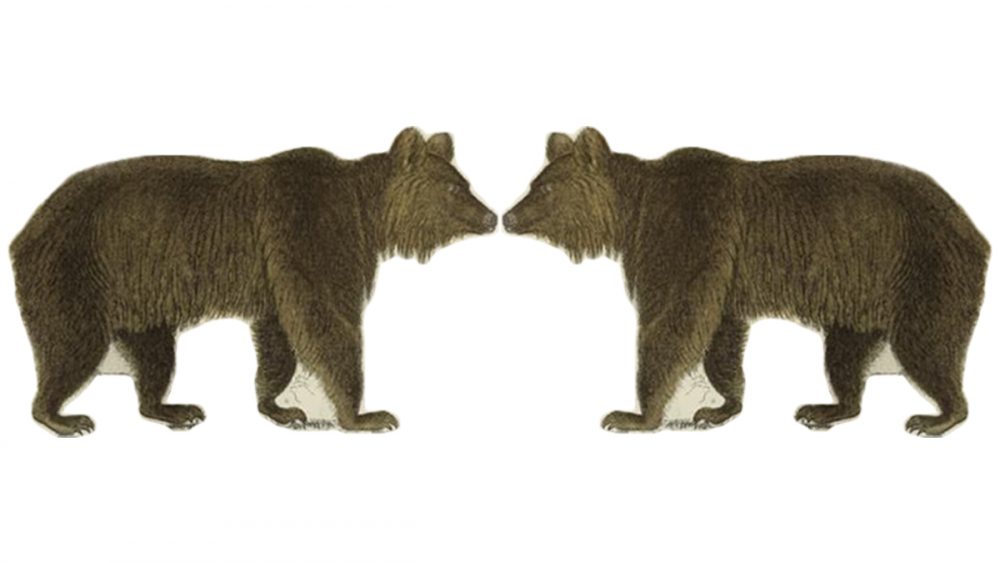 GIS Day this year at Utah State University will mark four months since the 129-year-old land-grant research university was equipped with a mix of 31 rugged tablets and GPS receivers because of a donation from Juniper Systems, which is located just a few miles from USU’s main campus.
GIS Day this year at Utah State University will mark four months since the 129-year-old land-grant research university was equipped with a mix of 31 rugged tablets and GPS receivers because of a donation from Juniper Systems, which is located just a few miles from USU’s main campus.
Juniper Systems this past summer donated $88,000 in products to USU’s S.J. and Jessie E. Quinney College of Natural Resources. The donation provides undergraduate students the opportunity to learn about modern GIS and field data collection support, and it provides researchers and graduate students field-tested technology for projects around the world.
On Nov. 14, GIS Day, Juniper Systems chose to highlight some of USU’s research.
“GIS Day is a celebration of the spatial data that moves our understanding of the world forward,” Juniper Systems geospatial account manager John Florio said. “What better way to celebrate than to highlight globe-spanning, knowledge-building projects at USU?”
Since the donation, students and researchers have checked out the Geode Sub-meter GPS Receiver nine times and the Mesa 2 Rugged Tablet 19 times. Each checkout period extended more than four months, according to Quinney Natural Resources Library Director Patsy Palacios.
“The relationship between developers, engineers, and people in the field will help us build the capacity for better science,” said Will Munger, a USU graduate student who used the equipment.
See their research below
Enlisting farmers and ranchers in Bolivia to protect the Amazon River

 A program to protect the headwaters of the Amazon River in the South American country of Bolivia has enlisted unlikely help – farmers and ranchers.
A program to protect the headwaters of the Amazon River in the South American country of Bolivia has enlisted unlikely help – farmers and ranchers.
A wide-ranging collaboration between several research universities and local Bolivian municipalities helps to generate local allies to protect the waters that flow into the most biologically diverse area on earth, the Amazon Rainforest. The program utilizes reciprocal watershed agreements with local farmers and ranchers to protect critical water recharge zones. The agreements create localized incentives with items like fruit trees, bee boxes, fencing material, and irrigation equipment. This program, in return, asks for help maintaining and protecting sensitive watersheds.
“Healthy forests equal healthy water and healthy water equals healthy communities,” said Will Munger, a graduate student at Utah State University who spent 2 ½ months this past summer evaluating the watershed restoration project. “Farmers and ranchers are now the protectors of these forests.”
Munger said the area near the top of a watershed is critically important to aquifers. “When you have forests, water moves more slowly,” he said. “It’s cleaner and it’s healthier for animals and people downstream.” The Amazon basin transports more water than any other river system on earth. The basin sustains millions of people with water and controls regional climates, according to the World Wildlife Fund.
Munger brought the Mesa 2 to Bolivia to navigate rural areas, take pictures, and make maps of critical water recharge zones, in addition to other work. “We were working in rough conditions, and it’s built rugged,” he said. The fieldwork took place in high-elevation mountains and desert valleys near the Gran Chaco region and Amazon Forest.
Since 1978, humans – largely cattle ranchers and industrial agriculture operations – have destroyed more than 290,000 square miles of the Amazon Rainforest, the largest rainforest on earth. Bolivia is the second highest contributor to rapid deforestation behind Brazil, according to Mongabay, an environmental science publication heavily focused on tropical rainforests.
Researchers around the globe are studying different types of reciprocal watershed agreements and their effectiveness in combating habitat loss in ecologically sensitive regions. On top of environmental science, the researchers are studying the social impacts of these agreements.
“We are doing social science to monitor these environmental science projects,” Munger said.
Researchers from USU, Purdue University, and Brandeis University in partnership with the Natura Foundation in Bolivia want to learn how the program’s mechanisms affect social inequality and gender inequality.
Munger and others will continue to record interviews with locals and photograph homes, fields, and agriculture and irrigation infrastructure for their ongoing research.
In the meantime, digital field notes from the Mesa 2 like enhanced mapping and video notes would help the researchers produce better science, Munger said. Integrated pictures, maps, drone footage, and remote sensing help visually show the importance of the work, he added.
The National Science Foundation funds the research. Munger plans to go back to Bolivia next summer as a part of his doctorate program.
Chasing increasingly elusive bumblebees in the United States and Canada

 The fuzzy black and yellow body of the western bumblebee is an increasingly rare sight in regions where its population once swarmed.
The fuzzy black and yellow body of the western bumblebee is an increasingly rare sight in regions where its population once swarmed.
Habitat loss and rising temperatures attributed to climate change are locking heat-sensitive bumblebees like the western bumblebee in high elevations. Certain bumblebee species – increasingly trapped in a by the heat – are struggling to interact with other bumblebees.
Ashley Rohde, a graduate student at USU, tracked bumblebee species in the United States and Canada over a month-long period using the Mesa 2 this past summer. In her second year of data collection, Rohde followed bumblebees as they moved across landscapes and population boundaries.
“Part of making a healthy species is those populations need to interact with each other and exchange genetic material,” Rohde said. “The bees can’t go into lower elevations to interact because of high temperatures and agricultural land use in valleys.”
Rohde added that urbanization, pesticides, and decreased floral resources are other contributing factors to the bumblebee’s decline.
Bumblebees pollinate both wild plant species and agricultural crops. The bumblebee is second only to the honeybee for its economic significance. However, a large-scale 2011 study found “range-wide population declines” in several North American species of bumblebee. More recently, researchers from Canada who dissected the genome of a yellow-banded bumblebee found evidence that inbreeding and disease are central contributors to the species’ decline.
While higher elevations offer a reprieve for bumblebees – pesticide-free floral resources – they cannot interact with other species in a meaningful way.
To study the issue, Rohde used the Mesa 2 running Survey123, a digital form-based data collection software, to track where the research team caught bees – and how many they caught. “In the field, the Mesa 2 is essentially indestructible.”
Before the Mesa 2 was available, Rohde tried to convince researchers to ditch paper and pen for a digital recordkeeping platform. “I bought cheap tablets while trying to convince them to go digital,” Rohde said. “They crapped out on us. They weren’t hardy or ready for the elements” like water.
“The Mesa 2 works great,” she said. In addition to collecting data on bees, Rohde gathered vegetation data. The research team will input the data into a modeling system that works in conjunction with genetic extractions and measurements of gene flow to better understand the threats facing bumblebees.
Bumblebees provide a necessary service in nature – pollinating kitchen mainstays like the tomato and watermelon. Farmers should use fewer pesticides and let weeds grow in agricultural areas to help sustain bumblebees, Rohde said.
Until something changes, “we’re going to find continued degradation,” Rohde said about the research. “The western bumblebee used to be the most common in the western United States – I caught two last year.”
Locating river channel heads in redwood forests

 Where does a river actually start?
Where does a river actually start?
That was the question Adam Fisher, a graduate student at USU, spent the month of May answering.
Fisher trudged, trotted, and trekked through northern California’s redwood forests mapping channel heads – the official starting place of rivers and streams. A four-member research team, which includes Fisher, began locating channel heads in areas like Humboldt Redwoods State Park and Headwaters Forest Reserve this summer. The group hopes to compare the length of old-growth forest channel heads against the length of managed forest channel heads to understand sediment input and landscape health.
“I’m hoping that we’ll be able to understand where sediment comes from on this landscape,” Fisher said. “It could help foresters better identify channel heads and not harvest trees in those areas or understand the dynamic between harvesting trees and channel heads.”
 According to Fisher, the loss of old-growth forests increases the amount of sediment in river systems.
According to Fisher, the loss of old-growth forests increases the amount of sediment in river systems.
“They get cloudier with more sediment and that has an impact the forest health and the ecosystem, Fisher said. “We’re trying to understand the amount of sediment going into the river.”
The early research shows the old-growth forest beds, covered in fallen trees and thick vegetation, stave off excess river sediment in channel heads. In contrast, managed forests often contain uniform ground cover. This creates lengthy channel heads that pick up excess sediments.
“Channel heads are lengthier in managed forests because there is less water outtake and vegetation and more hillslope instability,” Fisher said. “You get more water in the channel and water has the power to erode.”
Fisher used pre-loaded maps and the Geode on a monopod to locate channel heads. “The Geode was user-friendly and the software was intuitive,” Fisher said. “Sometimes GPS can be complicated and you don’t want to struggle to find coordinates or directions.”
“I liked the sub-meter accuracy,” he added.
The research team entered data into Geonet, a tool that automatically identifies channel heads from high-resolution topography from the Geode. But mapping channel heads is just one part of the research.
The team is likely to head back summer 2019 to continue the research, which is a collaboration between the National Park Service, California State Parks, the Bureau of Land Management, the U.S. Forest Service, and local environmental groups and timber harvesting companies.
“Timber harvesting companies were very helpful and excited about the research,” Fisher said. “It helps us better understand the health of the landscape.”
Tracking carnivorous species in Turkey

 USU researchers in eastern Turkey tracked brown bears, grey wolves, and Eurasian lynxes this summer in a research effort that echoed similar endeavors made in the American west.
USU researchers in eastern Turkey tracked brown bears, grey wolves, and Eurasian lynxes this summer in a research effort that echoed similar endeavors made in the American west.
Researchers deployed GPS collars and camera traps and mapped forest roads in Turkey to answer basic questions about three carnivorous species that will guide long-term efforts to grow Turkey’s national park system and establish the country’s first wildlife corridor, a protected area that links larger protected habitats. Researchers used the Mesa 2, GPS collars, and camera traps to establish range size and habitat preference for the three animals.
“There’s human encroachment and human-wildlife conflict – same with the American west,” said Mark Chynoweth, an assistant professor for wildland resources at USU. “It’s the same problems where bears and wolves are feeding on livestock and persecuted by humans.”
“People have a hard time living with these animals,” he added. “Without support, they’re going to shoot them.”
The collaborative project brings together around a dozen people from the University of Utah, USU, and universities from Turkey and Croatia. Together the team hopes to create a long-term roadmap for conservation in understudied areas of the country. Turkey, a country of 80 million people that straddles eastern Europe and western Asia, is one of the world’s newly industrialized economies. However, only a small portion of the nation’s land is under protected status.
In addition to wildlife research, the team is working with local communities to provide support.
“Part of the project is to make inroads in local communities and say, ‘How can we help you?’” Chynoweth said. “They’re open to new ideas and innovative solutions.”
Chynoweth used the Mesa 2 with ArcPad, a mobile field mapping and data collection software, to gather data on brown bears, grey wolves, and Eurasian lynxes.
“The size was really nice and the battery power was impressive,” he said. “Plus, it’s a familiar system. I use Windows all day on my computer. Using it in the field is helpful.”
The project is five years old and the researchers plan to continue their efforts.
“I think that it will have broad-reaching impacts in similar environments in the developing world,” Chynoweth said.
Learn more about the USU GIS Lab and its research here. For more information about Juniper Systems’ lineup of rugged GIS-ready products, contact us here or visit Juniper Systems online.

Really a great addition. I have read this marvelous post. Thanks for sharing information about it. I really like that. Thanks so lot for your convene.
Hi, I find reading this article a joy. It is extremely helpful and interesting and very much looking forward to reading more of your work..
Very interesting blog. Alot of blogs I see these days don’t really provide anything that I’m interested in, but I’m most definately interested in this one. Just thought that I would post and let you know.
Thank you for helping people get the information they need. Great stuff as usual. Keep up the great work!!!
You know your projects stand out of the herd. There is something special about them. It seems to me all of them are really brilliant!
This is really a nice and informative, containing all information and also has a great impact on the new technology. Thanks for sharing it,
This type of message always inspiring and I prefer to read quality content, so happy to find good place to many here in the post, the writing is just great, thanks for the post.
I was reading your article and wondered if you had considered creating an ebook on this subject. Your writing would sell it fast. You have a lot of writing talent.
I really loved reading your blog. It was very well authored and easy to understand. Unlike other blogs I have read which are really not that good.Thanks alot!
I’m glad I found this web site, I couldn’t find any knowledge on this matter prior to.Also operate a site and if you are ever interested in doing some visitor writing for me if possible feel free to let me know, im always look for people to check out my web site.
Very good points you wrote here..Great stuff…I think you’ve made some truly interesting points.Keep up the good work.
Thanks for sharing the info, keep up the good work going…. I really enjoyed exploring your site. good resource…
Very good points you wrote here..Great stuff…I think you’ve made some truly interesting points.Keep up the good work.
I’ve been surfing online more than three hours today, yet I never found any interesting article like yours. It’s pretty worth enough for me. In my opinion, if all webmasters and bloggers made good content as you did, the web will be a lot more useful than ever before.
I learn some new stuff from it too, thanks for sharing your information.
There is so much in this article that I would never have thought of on my own. Your content gives readers things to think about in an interesting way. Thank you for your clear information.
I am continually amazed by the amount of information available on this subject. What you presented was well researched and well worded in order to get your stand on this across to all your readers.
I think that thanks for the valuabe information and insights you have so provided here.